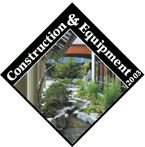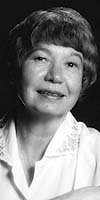
Surveys
Awards
DJC.COM
March 27, 2003
Speech Making 101 for contractors
Special to the Journal

Dane |
Some people simply dread the idea of delivering a speech of any kind — they feel anxious, have sweaty hands and racing hearts.
“Stage fright” is somewhat natural, but it doesn’t need to dominate one’s thoughts. Try to take several deep breaths, be personable toward the people in the audience and concentrate on the message. What is it that you really want to say?
Create an outline. In order to make sense, any speech needs to have an outline. What is the main subject? Are there any reference materials that should be mentioned?
List the main points. Gather together any copies of articles, notes from books, and quotes that you may want to use.
Decide on the beginning. The beginning of your talk sets the tone for the whole presentation. The first three sentences helps the audience have an idea of where you are going. Powerful speakers begin by asking a question, stating an unusual fact or by doing something that gets the attention of people who are there to listen.
Decide on the closing. The effective ending must include ideas that bring the elements of the speech together, so there is a fitting conclusion. Did you want to teach? Inform? Entertain? Challenge?
Was that accomplished ? An example of a powerful close could be: “Now you know the benefits of swimming. Join a health club this week. You’ll be glad that you did.”
Type the speech. Eventually the complete speech will need to be typed. This is when a sharp secretary is worth every dollar spent, unless you like to do the typing yourself. Try using a larger size font on the computer, such as 14 points. This helps to easily read it out loud.
Practice the speech. One of the best aids in practicing for a speech is to use a tape recorder. Slip a new cassette tape into the recorder, then begin.
As you begin, state the time. You can read your notes, attempting to interject some real enthusiasm in your voice. Try a little voice variety also. At the end, state the time. By going back and reviewing the tape, you can have an idea of the length of time needed to deliver the speech in a professional, polished manner.
How about visual aids? Audiences these days are definitely visually minded. They like to see charts, photographs, overhead transparencies and maps. The best visuals are attractive, well organized and readable.
Remember people in the back rows. If they are seated 60 feet away from the speaker, any aids used must be extra large, have heavy lines and not contain too many words. Most visuals should be limited to six lines with a maximum of six words in each line.
Bill Peterson of Peterson Consulting Engineers has an office in Keizer, Ore. He serves as the city engineer for both Keizer and Hubbard. A majority of his work has been in master planning, which has required speaking to city councils or city planners.
Peterson mounts blown-up photographs, maps and drawings on large pieces of foam board, when he is preparing a presentation.
Occasionally, Peterson has been asked to prepare graphics and exhibits in a rush.
“Thanks to computers, graphic designs and CAD capabilities, we can put the whole exhibit together in three hours, if we have to,” he says.
His advice to other professionals is: “Have some excellent visuals on hand, it makes you feel more at ease. For any concept, offer graphs and charts that decision makers can study later on.”
Give the speech. Be enthusiastic about your subject. Excellent speakers make use of body movements and expansive gestures to keep up the audience’s interest. They also remember to connect with people in the room. “I’m so glad to be here,” a man may declare, as he makes eye contact with several people.
Audiences like a speaker who chooses to be himself, and who will share what he has to say in a friendly, caring manner.
An ideal way to refer to notes is if they are short and taped to large index cards. They can be numbered, according to their proper order. No one likes to watch someone at the podium shuffling around long pieces of messy papers. After studying the outline, speakers do well as they slide from one idea to another.
Limit your talk to three major points. This number appeals to audiences, as it avoids information overload. Include a few fascinating vocabulary words, and you will add interest to the presentation.
As your speech ends, avoid sitting down abruptly or gazing at the floor. Pause, say nothing and make firm eye contact with the group. Smile graciously. Allow the audience members to clap their hands before you sit down.
The award acceptance speech. Brevity is the key here. Thank the most important people who helped you gain the award. Be sure to mention any outstanding team effort on your behalf. Was an auditorium built in record time? Say so — it’s your turn to shine. Pare the words down, then say “thank you very much” and smile.
Remember. Anyone can give a worthwhile speech. Practice makes perfect. If a mistake or two is made, it’s not the end of the world. Have a sense of humor. It’s OK to be human. The next time you have the chance to speak, welcome the challenge.
Rose Anne Dane is an educational speaker and freelance writer. She is a member of the Chamber of Commerce in Salem, Ore. She can be contacted at (503) 463-1617 or by e-mail at DANEISCOOL@msn.com.
Other Stories:
- Washington’s construction forecast remains hazy
- The equipment dilemma: buy or rent?
- How to defuse skyrocketing insurance costs
- Software streamlines vehicle maintenance
- Don’t let erosion wash away your profits
- Plywood sheets get new stripes
- Send your team to ‘spring training’
- Smoothing out the construction process
- Success times 10 — follow these leaders
- Students learn to handle the heavy metal
- What is your construction company worth?
- Learning a lesson from booming China
- Bringing the steel detailer into the design process
- Look out below when starting site work
- Going to a happy place — work!
- Passing the ownership baton
- 3 ways to make sure you get paid
Copyright ©2009 Seattle Daily Journal and DJC.COM.
Comments? Questions? Contact us.